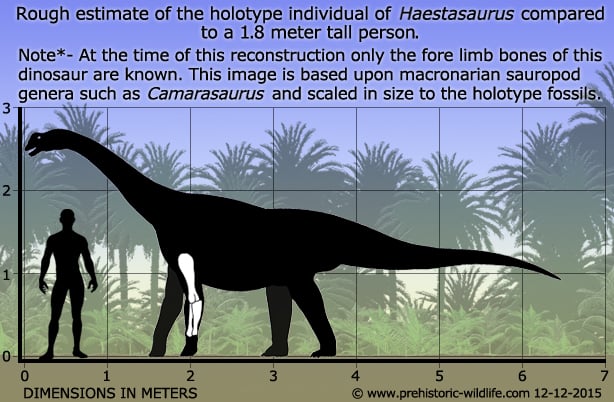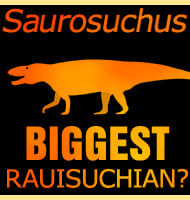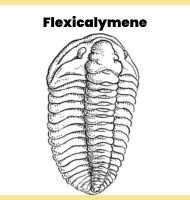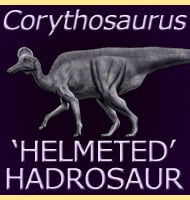In Depth
The holotype bones of Haestasaurus were originally found in 1852 by a man named Samuel Husband Beckles who found them exposed by a low tide on a coast not far from Hastings. These remains were studied by Gideon Mantell (best remembered for naming Iguanodon) who considered them to represent a second species of the sauropod Pelorosaurus, P. becklesii (in honour of Samuel Beckles who found the bones). The bones consisted of a partial fore limb and remained in the private collection of Samuel Beckles until 1891 when they were acquired by the British Museum of Natural History.
However, speculation about the correct identity of the fossils already started before they were acquired by the British Museum of Natural History. Casts of the bones had been made before 1891, and these were being studied as early as 1888. Initially, and possibly unaware that the fossils had been used as a basis for a second species of Pelorosaurus, Richard Lydekker mistakenly attributed to the fossil location of the bones as the Isle of Wight, which is quite some way from Hastings. For the record, we currently do not know the precise fossil location of the holotype bones other than somewhere on the coastline of Hastings.
Another noted American palaeontologist named Othniel Charles Marsh considered the bones to represent a species of Morosaurus in 1889. Lydekker disagreed with this and instead chose to list it as a species of Cetiosaurus (in addition to this Morosaurus is now considered to be a synonym to Camarasaurus). Much later in 1932, Friedrich von Huene was of the opinion that Pelorosaurus becklesii should be a distinct genus but did not create a name. He also noted a similarity to either Camarasaurus or Brachiosaurus, again indicating a similarity with macronarian sauropods. Later again in 1990, John Stanton noted that fossils of Pelorosaurus becklesii were not co-generic with the Pelorosaurus type species P. conybeari.
In 2015 Pelorosaurus becklesii was finally given its own genus in a study by Paul Upchurch, Philip Mannion and Michael Taylor. The new name was Haestasaurus, meaning ‘Haesta lizard’ and was named after an anglo-saxon war chief called Haesta, whose name would also go on to derive the modern name of Hastings. Because only some fore limb bones exist it has been difficult to definitively ascertain what kind of sauropod Haestasaurus was. Earlier interpretations of the holotype bones suggest that Haestasaurus was a macronarian sauropod similar to Camarasaurus, and indeed this may still be valid. Although macronarian sauropods were most common in the Late Jurassic, some are known in the early Cretaceous, with some genera such as Brontomerus being known to have existed even later that Haestasaurus. Another idea is that Haestasaurus may be a titanosauriform or even a primitive titanosaur, which have their evolutionary roots within the macronarian sauropods. The bones of Haestasaurus do show a degree of thickening to them which is a feature seen in titanosaurs, however they are not thickened to a degree that would make them exclusively titanosaurian, and may even represent a transitional stage. Ultimately however more fossil discoveries are needed to reveal more information about Haestasaurus.
Further Reading
- The anatomy and phylogenetic relationships of ‘Pelorosaurus’ becklesii (Neosauropoda, Macronaria) from the Early Cretaceous of England. - PLoS ONE 10(6):e0125819:1-51. - P. Upchurch, P. D. Mannion & M. P. Taylor - 2015.










